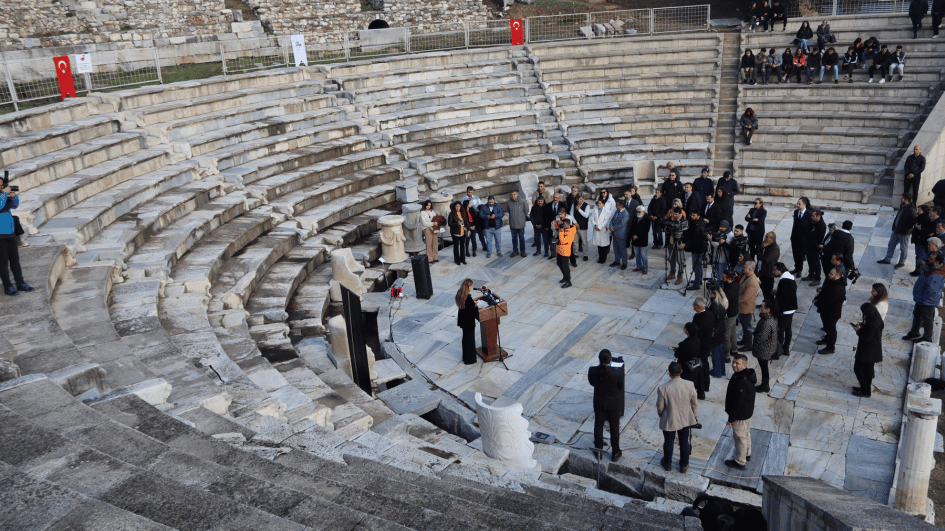Ancient Metropolis findings made public
IZMIR

Lots of monumental structures and artifacts have been unearthed during works carried out by Dokuz Eylül University (DEU) in the ancient city of Metropolis, located in the Torbalı district of İzmir.
The head of the excavations, Professor Serdar Aybek of DEU Faculty of Letters Department of Archaeology, said, "We always find surprises in Metropolis. Since it is a city built on a slope, the ruins are generally unearthed under deep alluvial fills. Preserved columns and standing brick shops were found in their original place."
A press conference was held on Dec. 20 to introduce the artifacts unearthed in the ancient city of Metropolis, which was called the “mother goddess city” in antiquity, to the public.
“There is a long-time archaeological work going on in Metropolis since 1989. With the transfer of research activities in Metropolis to DEU, Metropolis returned to 2003, when the research was initiated. We will continue to work with the same enthusiasm and excitement in the future,” Aybek said.
Stating that Metropolis was a very important city of Ionia, Aybek said: “It was a city that had very fertile lands around its border. Agriculture especially stands out there. Thanks to the abundance of the Maeander [Menderes River], which flows right in front of it, it sent these agricultural products to different places in the ancient world and got rich.
"When we visit the ruins of the Metropolis today, we can see this richness, the beautiful marble structures and understand the magnificence of the past. We always find surprises in Metropolis. Since it is a city built on a hillside, the ruins are usually unearthed under deep alluvial deposits. Although there is not much to see on the ground in the new area where we are working, very important findings were revealed during excavations. Columns preserved in situ and brick shops were found,” Aybek added.
DEU Rector Professor Nükhet Hotar said, "Retired professor Recep Meriç discovered the existence of this building in 1990 and initiated excavations. After nearly 30 years, there was a break for a while after his retirement. Then our university was given the authority to carry out this excavation, and we have been continuing it for two years.
"The ancient city is very valuable just like every stone of our country. It is very important that this city and theater were found almost intact and in their original form. Experts explained that there was a very special water drainage system, especially against floods. In other parts of the city, especially on the floors of villas that served as residences, there are precious mosaics made instead of carpets. Male and female figures are generally seen facing each other in mosaics. We believe they were owners of the house,” Hotar added.
Stating that the ancient city also served as an important trade base, Hotar said, "Our next goal is to carry out national and international academic studies. This place is like an open-air laboratory; we have very important data. The first excavation here was initiated by our university. We try to protect it as much as possible."
"Within the scope of another project under the leadership of the district governor, primary school children will come here to get various experiences. Unfortunately, this is not a place visited by tourists or scientists. They don’t know much about this place. Efforts of press members to make these beauties known around the world are important to us.”
















